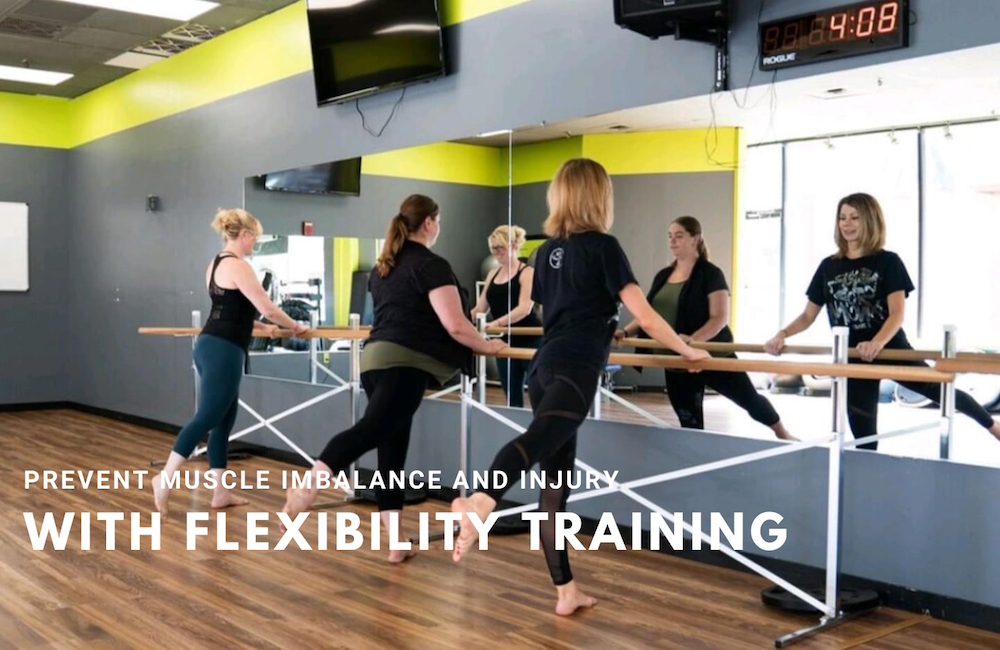Flexibility training is often a neglected part of a fitness routine. You have an hour to spend at the gym and you use all 60 minutes for your lifting routine, barely including a warm up and skipping any cool-down. However, there are many benefits that come with adding stretching or foam rolling in your fitness routine. Static stretching, foam rolling and dynamic stretching are all tools you can use to increase your flexibility. Being more flexible promotes joint health, can improve performance in your workouts and help with low back pain. Let’s break down why flexibility training is important and how it’s done.
Relative Flexibility
Relative flexibility is a term used to describe the body’s ability to find the path of least resistance. For example, if you have tightness in one muscle that decreases your ability to perform a movement correctly, your body will compensate in another area to overcome that lack of flexibility, leading to impaired movement. This impaired movement can lead to muscle imbalance and injury.
Flexibility training is important for keeping muscles at their optimum length. It’ll also help you notice when muscles feel too tight so you can correct it.
Muscle Imbalance
A common example of lack of flexibility causing muscle imbalance involves tight hip flexors (psoas, quadriceps). Someone who has tight hip flexors may have weakened or under-active glutes. If this issue is present while squatting, the hamstrings will have to work harder to make up for the weakened glutes. This may cause injury to your hamstrings.
Flexibility training is important to lengthen the tightened hip flexors that are causing the issue. You’ll also need to include glute strengthening to correct the weakness there.
Other Benefits
Our bodies consist of muscle synergies (muscles working together for coordinated movement). If one muscle is tight or overactive, another muscle is probably lengthened or under-active. Flexibility training prevents tightness to ensure proper movement and joint alignment which decreases injuries and pain.
Types of flexibility training
Foam Rolling
Foam rolling can be performed at the beginning or end of a workout, or on it’s own and involves the use of a tube-like object with varying densities. It’s great for relaxing overactive muscles that can cause muscle imbalances. Use the roller to find a tender spot in the muscle, gently roll over the spot for about 30 seconds, or until you feel a release. There’s some balance and coordination involved in foam rolling. It may require some practice at first.
Static stretching
Static stretching is best performed after a workout or on it’s own for recovery. Stretches need to be held for a minimum of 30 seconds in order for the muscle to relax and have lengthening benefits. Find the end range of a muscle and then reduce the stretch by roughly 10% to safely stretch. As you hold the stretch you’ll find that you can stretch further. I recommend pairing the stretch with your breath for relaxation benefits. Exhale as you stretch further.
Dynamic stretching
Dynamic stretching is great to include as part of a warm up. It involves taking muscles through their full range of motion and should mimic the workout you’re about to do. Think of it as greasing up your muscles for easier movement during your workout. Dynamic stretching can help prevent injury and can make your workouts more effective. Here are some examples.
If these kinds of flexibility training are boring to you, I recommend trying exercise like yoga and pilates. Not only can they help you lengthen your muscles, they relieve stress and can reduce pain. Have you been neglecting flexibility training in your routine? Now is a good time to include more. Start with foam rolling or static stretching on your days off from the gym to help with recovery. Your body will thank you.
If you need extra help, book a free session with one of our trainers.


